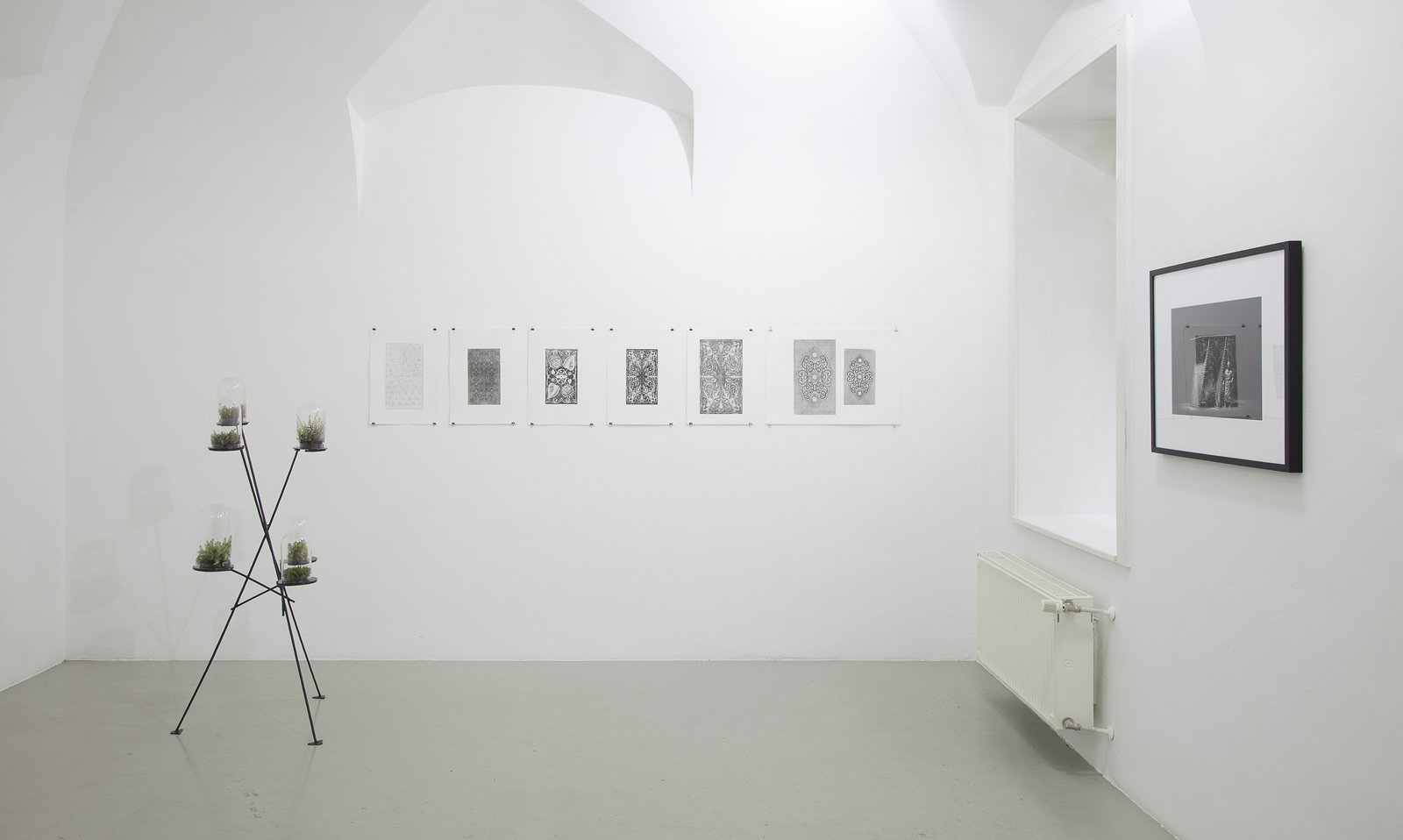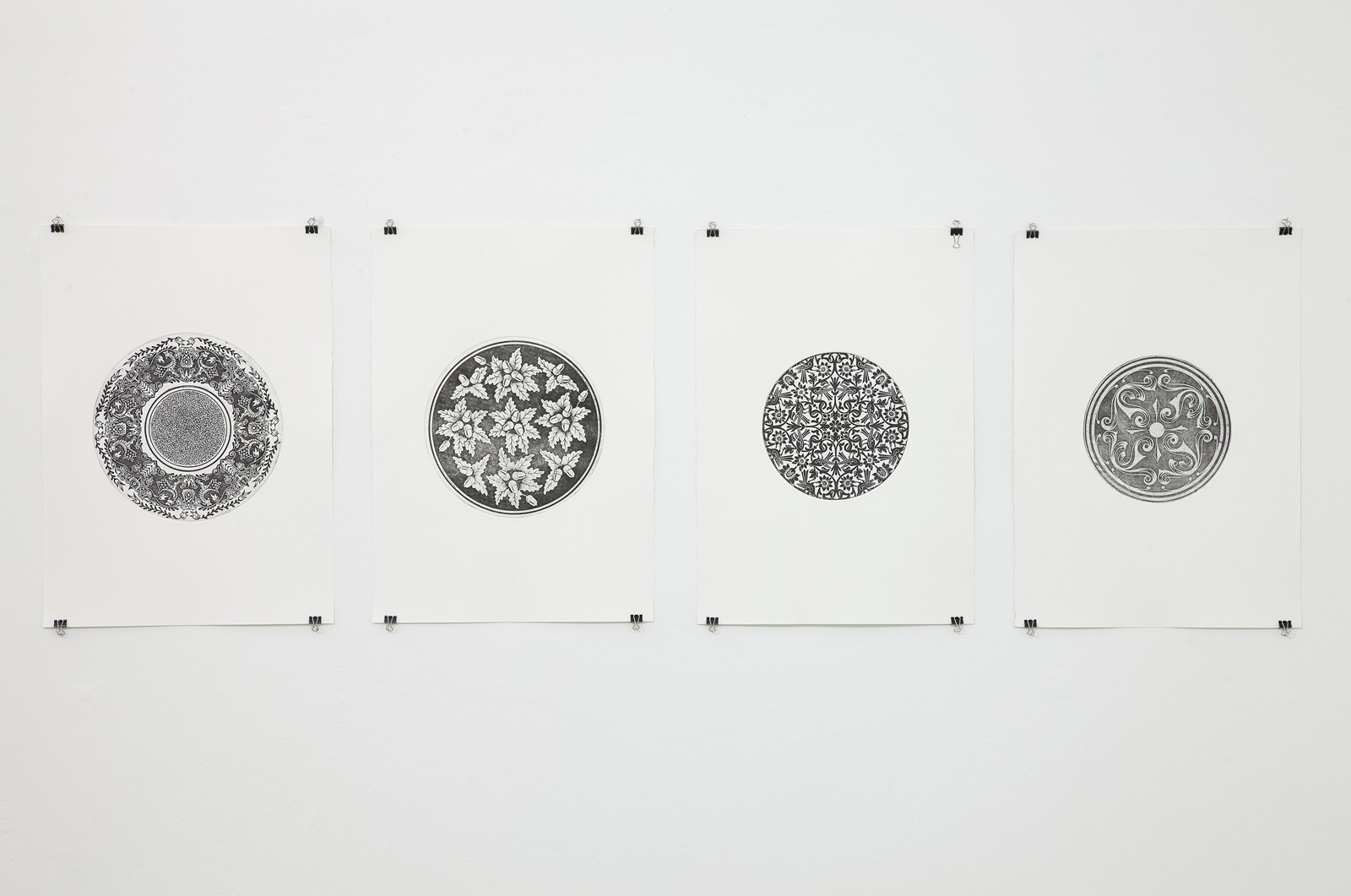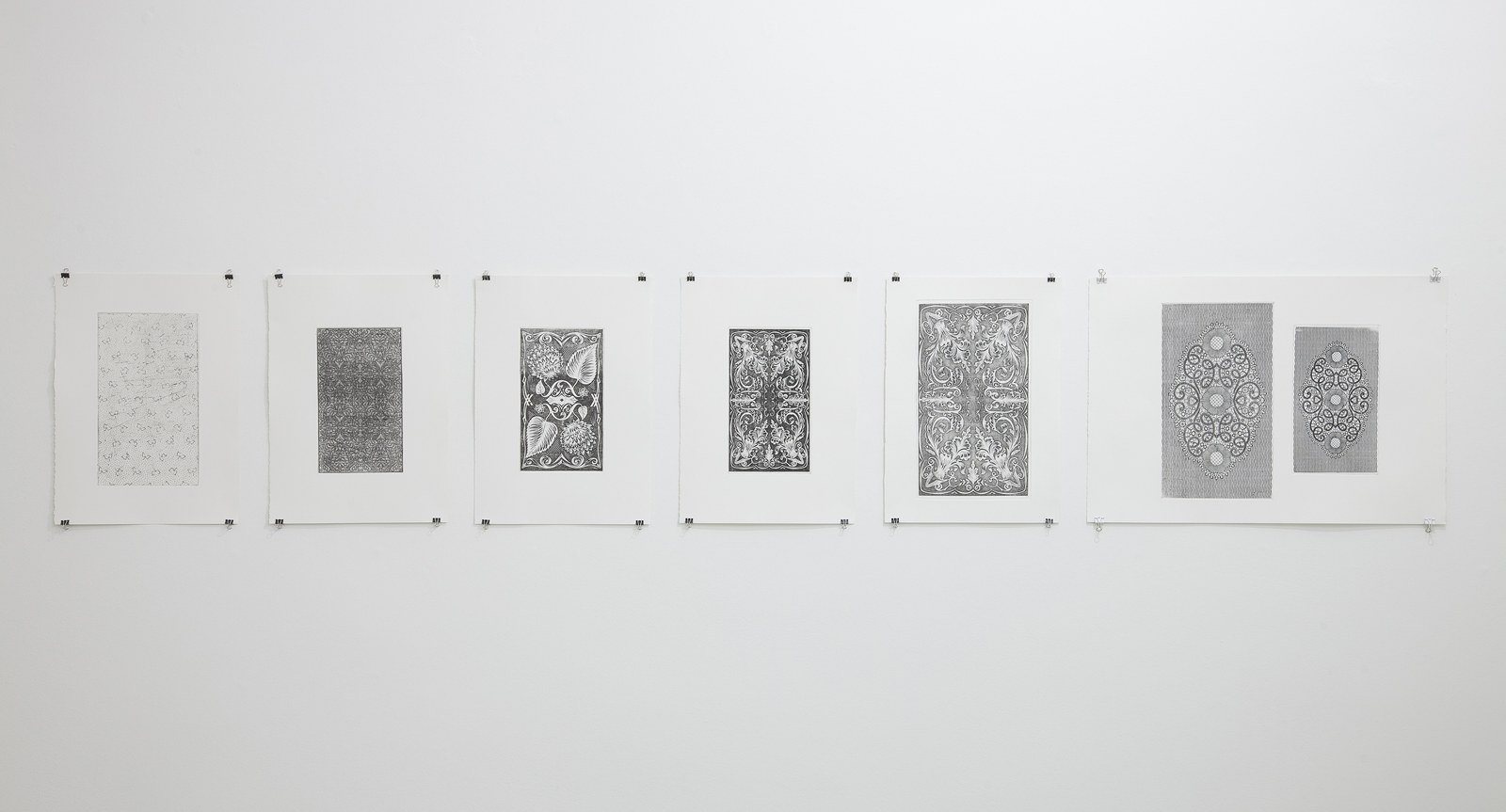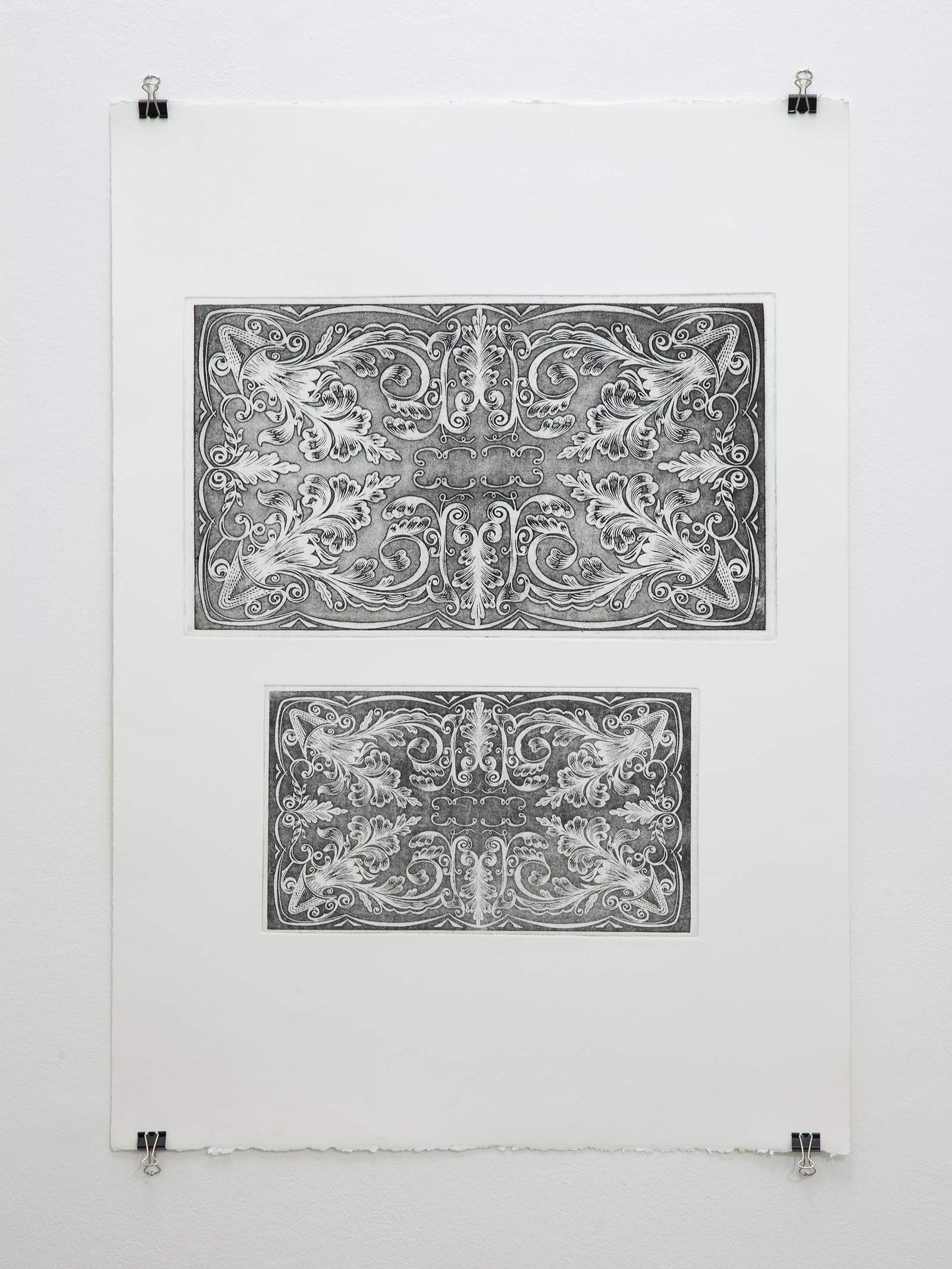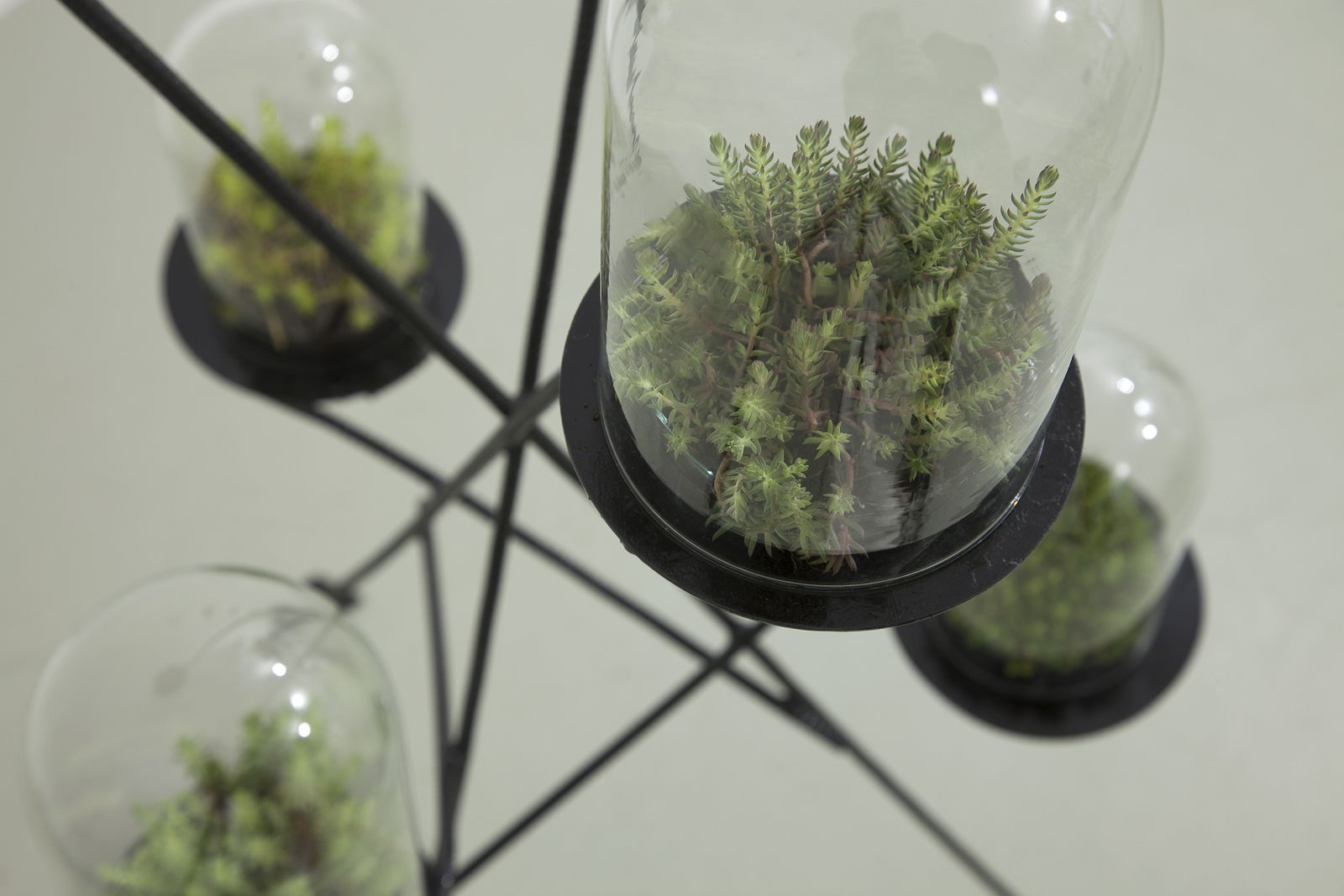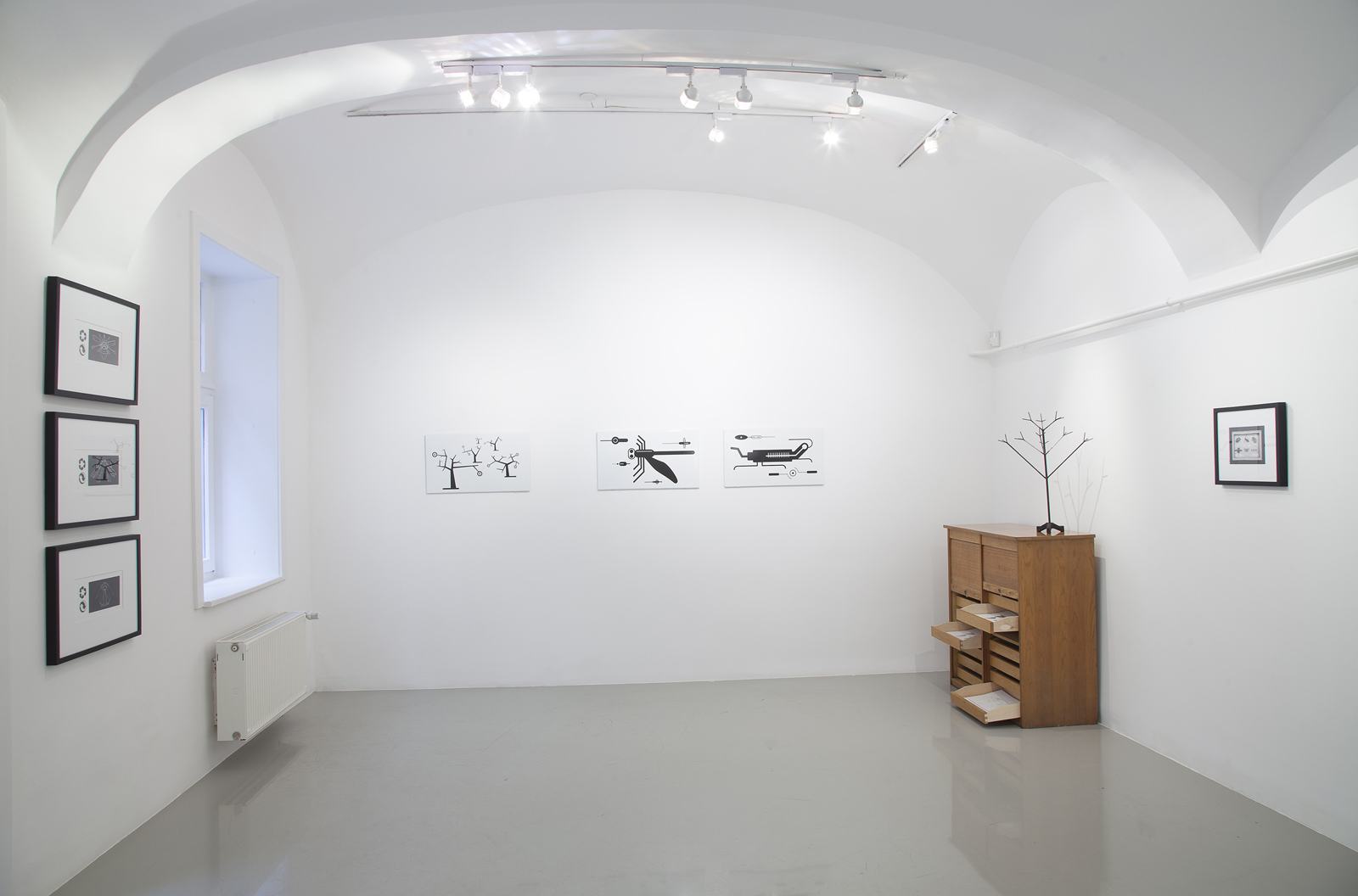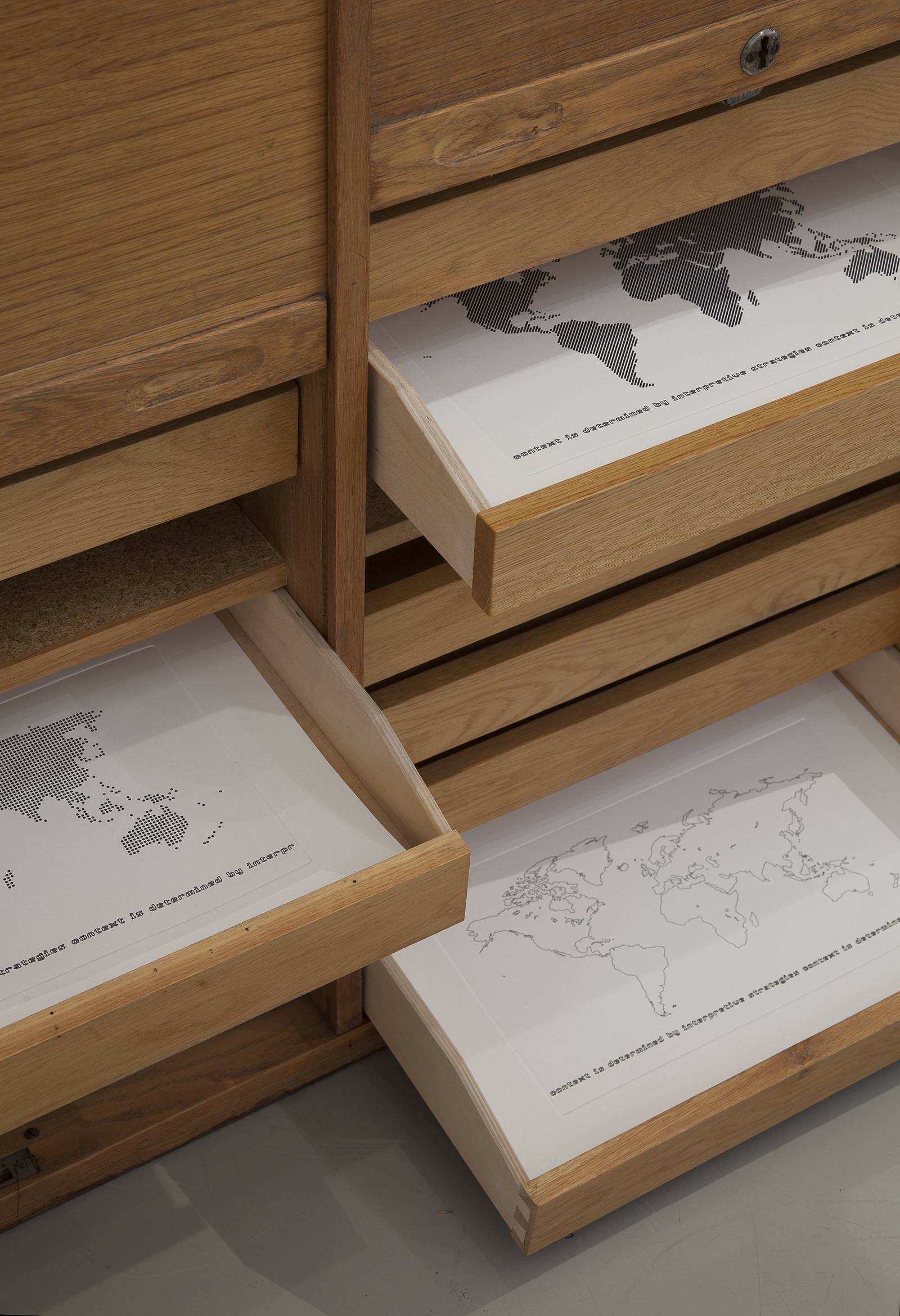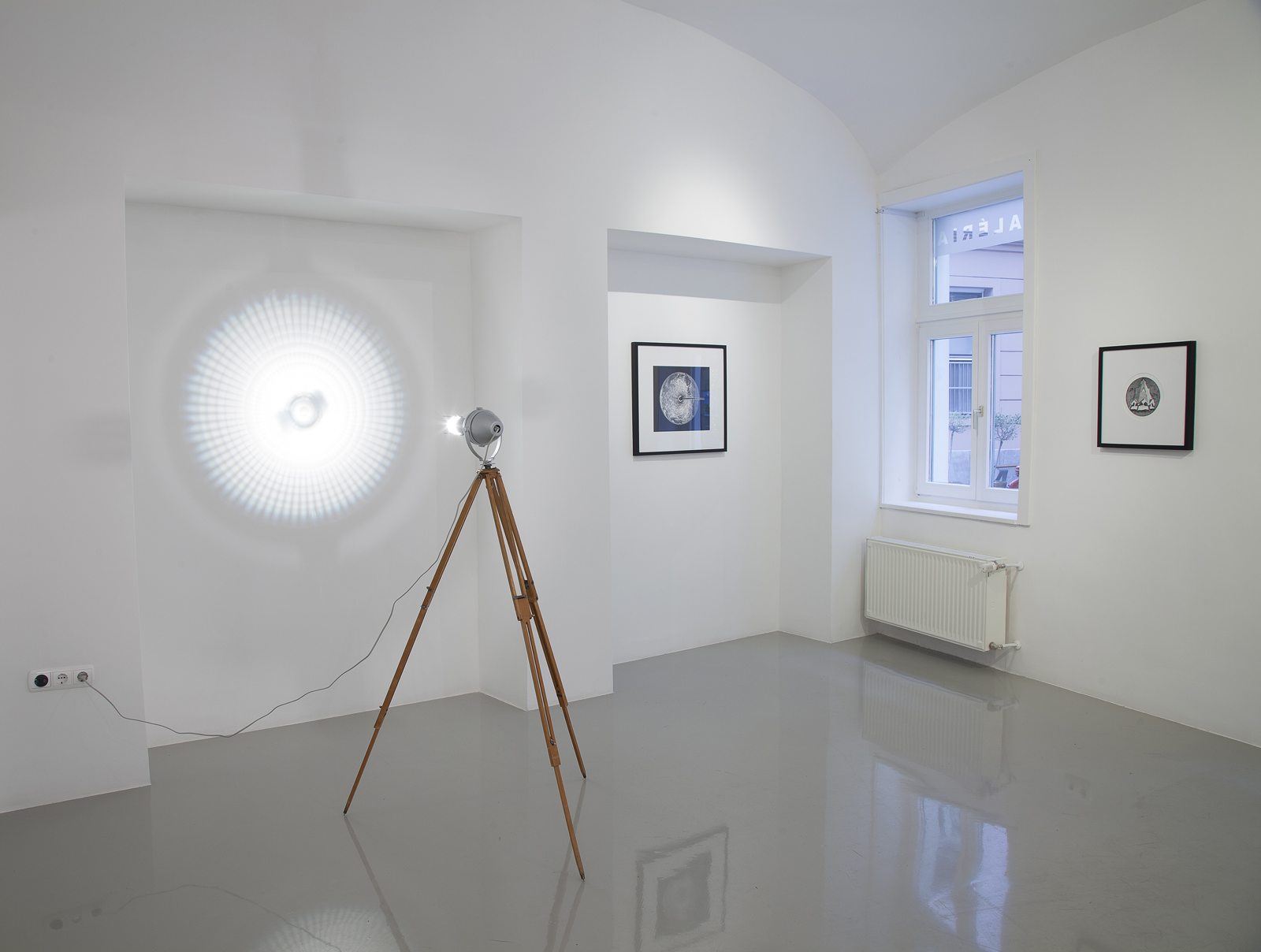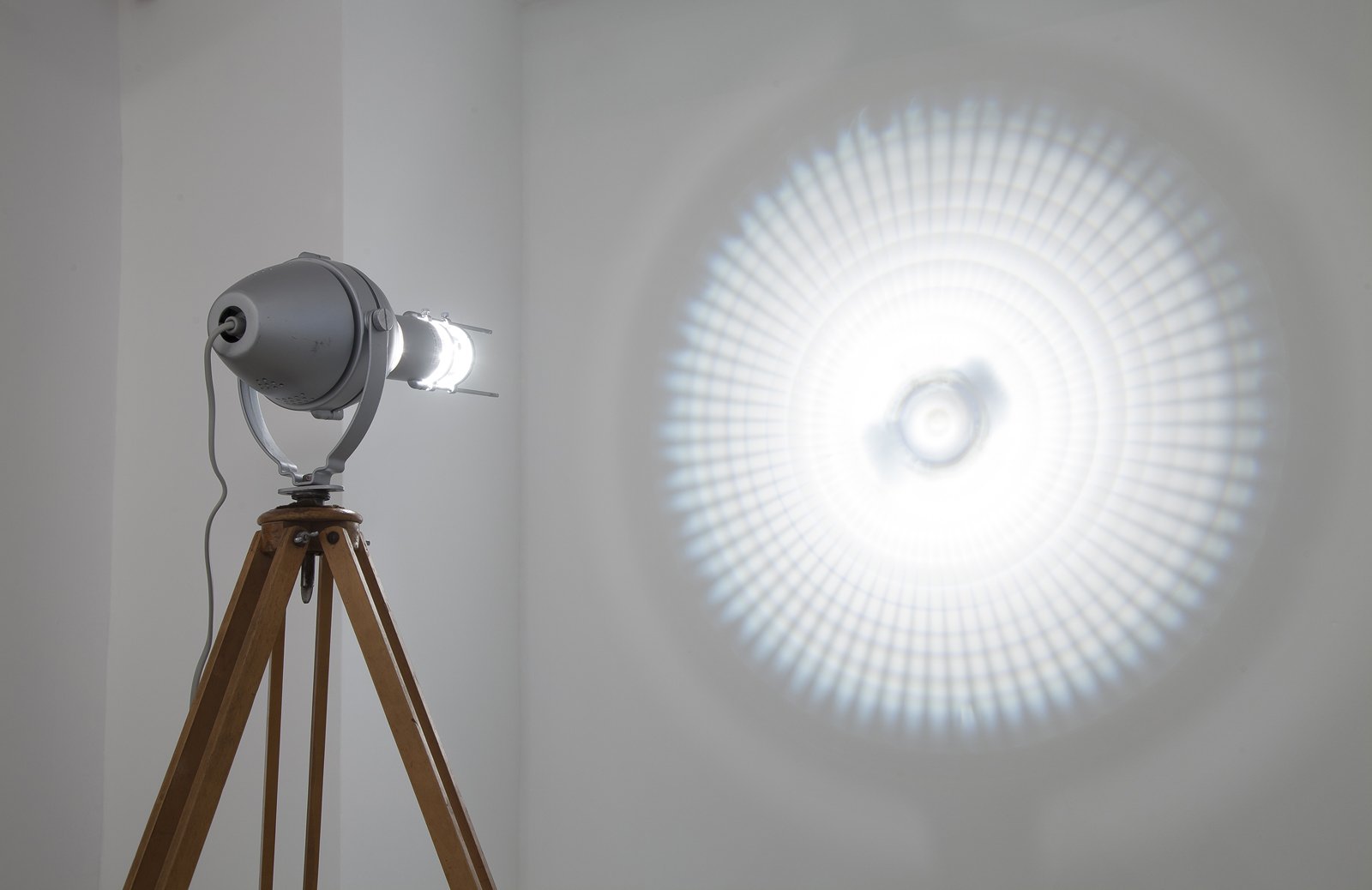Ádám Albert’s installation centres around the history of aluminium in Hungary. The raw material of this processed light metal is bauxite. Although the mining of bauxite in Hungary only began during the first decade of the 20th century, the utilization of the deposits proved to be a significant strategic-economic issue throughout the century. The tons of raw materials mined in the country were first transported to Germany during the World War, while later, as a result of the treaties following the war, Hungary was involved in a barter pool with the socialist countries of the former Eastern bloc.
At the time of the obligatory national treaties, tons of the light metal raw material of the war ended up in the form of teapots, pressed silverware, dinner-cans, and trays of peacetime household dowries. The narrative, geometrical ornaments on the surface of sturdy household items reflect the peculiar aesthetics of the era to this day. Albert has built the fiction of crisis starting out from the ornamental embellishments of the aluminium trays, typical attributes of the era. The second-hand trays of his collection were first used to build a relic architecture documented on photographs; then the once industrious aluminium smelter was wrapped up in the box of memories and put in the corner. As a result of Albert’s deconstruction interventions, the trays which appear as parts of the photo edifice are recycled as etching tympan sheets. However, the central motifs of the one-time trays do not only gain a new context, but, considering the system of references, a universal reading, as well. Analysing their sight, they almost instantly recall the surface of elaborate wallpapers characteristic of English Secession, the illustrations of German herbals, or even the fractal-type sculpture-like structures of living organisms (succulents).
